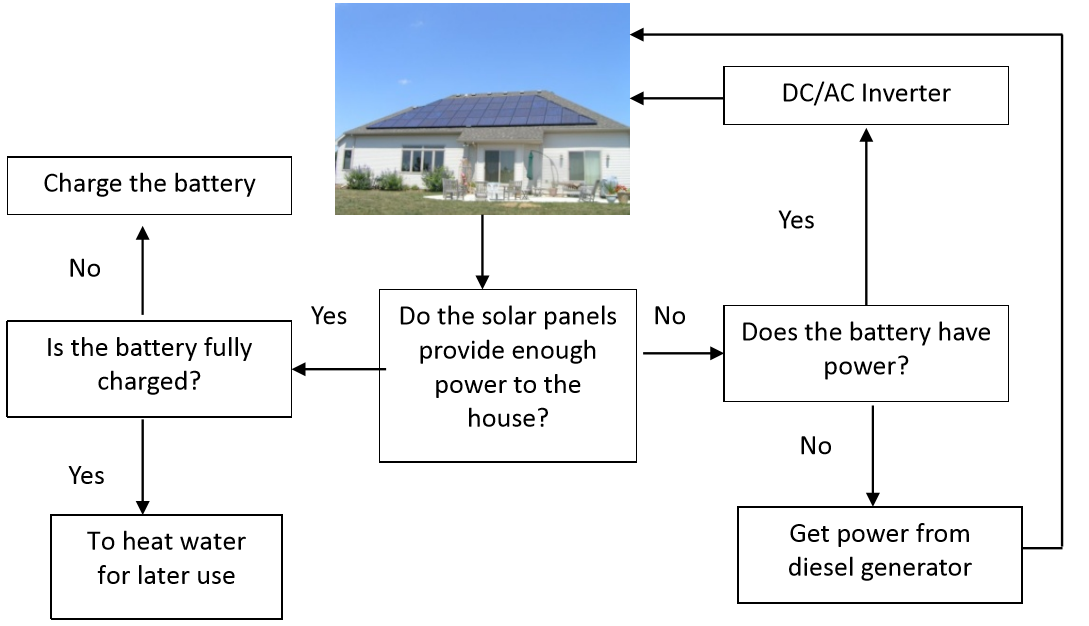August 20, 2018
Over the past 16 years in Australia, electricity prices for households have increased at an average annual rate of 8 per cent while the average inflation rate is around 2.8 per cent. This has put a financial strain on households across Australia. With the recent rapid decrease in PV prices and a similar trend for battery storage and increased awareness of environmental impacts, there is growing interest in public and academic discussions about the possibility of “leaving the grid” or “living off- grid” by installing PV-battery systems.
This study presents an integrated tool for off-grid housing design across Australia. The tool has been developed by implementing a solar PV battery system model into the existing Australian Zero Emission House design tool (AusZEH). This is a tool for designing low/zero carbon housing that incorporates technologies and measures to reduce whole-of-house energy consumption, and takes into account local climate, building envelope, equipment and appliances, and occupant behaviour (Ren et al., 2013). The off-grid housing design is evaluated by matching energy supply (predicted by the solar PV battery model) at one-hour time step with the energy demand (as predicted by AusZEH). Figure 1 shows the logic flow of the PV-battery system’s charging and discharging algorithm.
To ensure no electricity shortage throughout a whole year at any time step, the size of the PV-battery system is determined by the hourly energy demand of the household. This can be predicted by the model, based on the Typical Meteorological Year (TMY) weather data.
The output power (W) from a PV array can be estimated as

where f is the PV derating factor (around 0.75 to 0.8 for modern PV panels); Y is the peak capacity of the PV array (the amount of power it would produce under standard test conditions of a panel with 25°C and 1kW/m² irradiance); Ig is the global solar radiation incidence on the surface of the PV array; and Is is the standard amount of radiation used to rate the capacity of the PV array (1 kW/m²).
A case study was conducted for existing houses and showed that with non-electric energy sources (e.g. natural gas) for the four main end-uses (water heating, space heating, cook-top, and oven), households may operate off the grid without considering diesel generators. This is at a PV-battery installation cost of around A$47,000 in Sydney (a balanced heating/cooling region) and A$59,500 in Townsville (a tropical region). In Melbourne (a heating-dominated region), the most cost-effective way to go off-grid is to first retrofit the house to be 6 stars and then install a PV-battery system. The total cost is around A$49,500. This tool provides a cost-effective pathway for off-grid housing design in Australia.
Table 1 Indicative costs of installing solar PV-battery system for off-grid housing in three cities
| City | Solar PV size (kW) | Battery size (kWh) | Cost of installing PV-battery system ($) |
|---|---|---|---|
| Melbourne | 10 | 31 | $71,883 |
| Sydney | 10 | 18 | $47,061 |
| Townsville | 10 | 30 | $68,280 |
| 15 | 22 | $59,430 |
Table 2 Indicative costs of PV-battery system for the 6-star houses to stand off-grid in three cities
| City | PV Size (kW) | Battery Size (kWh) | Cost of PV-battery ($) | Cost of House Retrofit ($) | Total Cost ($) |
|---|---|---|---|---|---|
| Melbourne | 5 | 17 | $37,435 | $17,399 | $54,834 |
| 10 | 9 | $31,933 | $49,332 | ||
| Sydney | 5 | 39 | $76,097 | $16,839 | $92,936 |
| 10 | 10 | $33,061 | $49,900 | ||
| Townsville | 10 | 29 | $67,680 | $3,134 | $70,814 |
| 15 | 19 | $57,630 | $60,448 |

Figure 1 Logic flow of a solar PV-battery system charging and discharging for off-grid house
Reference
Zhengen Ren, Greg Foliente, Wan-Yee Chan, Dong Chen, Michael Ambrose, Phillip Paevere (2013). A model for predicting household end-use energy consumption and greenhouse gas emissions in Australia. International Journal of Sustainable Building Technology and Urban Development 4: 210-228.

